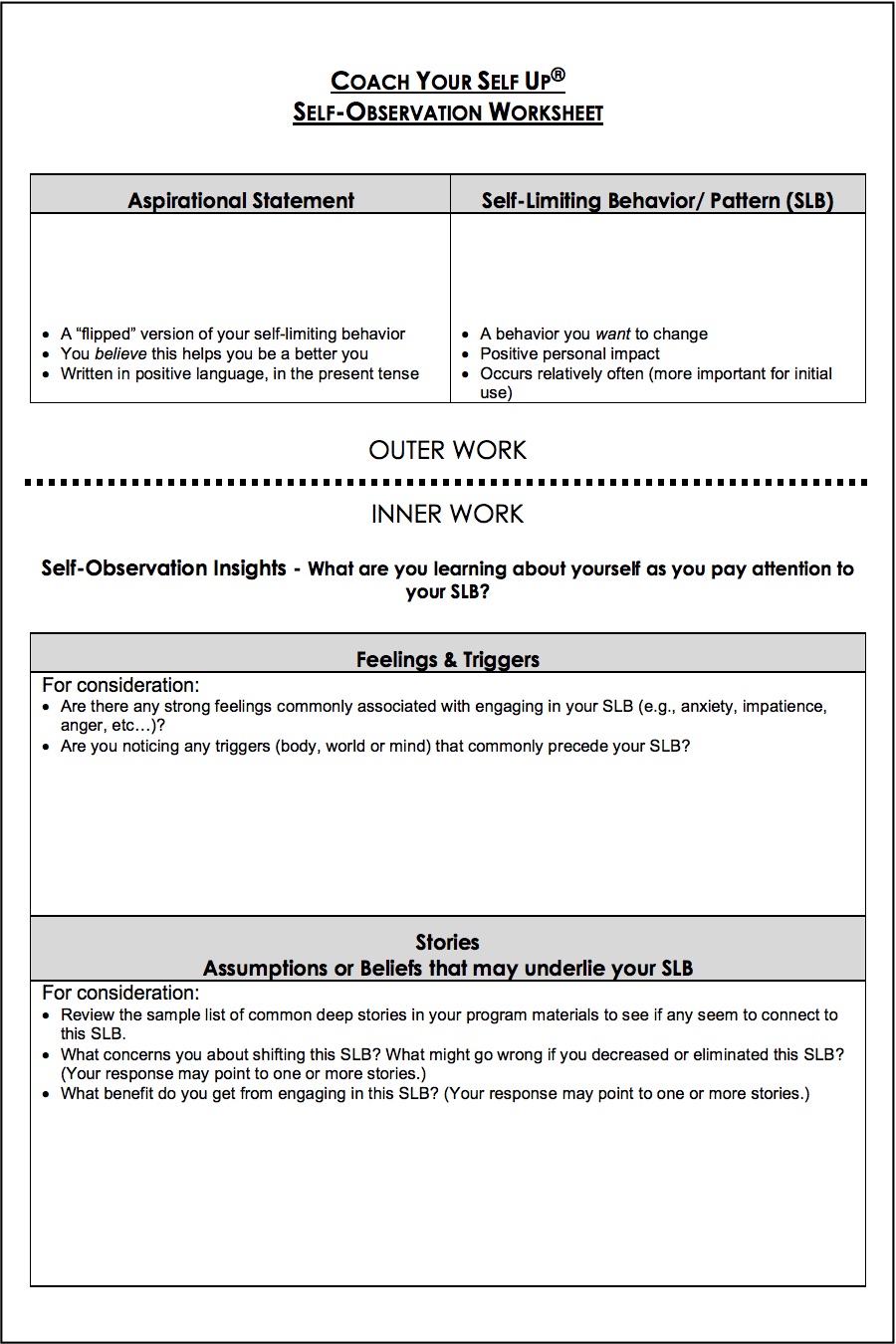I’m excited to share that I’m writing the “Coach Your Self Up” book about my approach to self-coaching. The book format is allowing me to add powerful new content and tools beyond what’s in the classroom program of the same name.
One new tool is a Self-Observation Worksheet designed to help individuals develop and support their self-observation practice.
Why a Self-Observation Worksheet?
First, let me remind you of where self-observation fits into the self-coaching process. Self-coaching is aimed at helping individuals make a sustained behavioral shift around what they perceive to be a self-limiting behavior. Self-observation means paying attention to “what’s going on for you” when you are engaging in the behavior you are trying to shift.
• Instead of trying to make a quick fix, there is great value in first observing your behavior in-depth over time. This allows you to get to the feelings, stories and triggers underlying the behavior. With observation comes understanding. You can then identify an underlying story, and ultimately challenge that story and experiment with acting differently.
Check Out the Worksheet
Assume you have decided to work on shifting a self-limiting behavior (SLB), such as “frequently interrupting others” or “not speaking up in meetings.” Using a worksheet gives you one place to capture and organize all your reflections pertaining to this behavior.
There are two sections delineating the “outer” work (top section) and the “inner” work (bottom section). This is a powerful visual reminder of the importance of doing the inner work to support an outer (behavioral) change. It is also helpful to see what inner forces are supporting the continuation of your current behavior. This may give you more insight into why making this particular change is not easy.

Here are some helpful hints on how to best utilize this tool.
1. Document the self-limiting behavior (SLB) you would like to shift. The worksheet gives you some ideas for selecting a self-limiting behavior to work on.
2. Create a “flipped” aspirational statement. You are more likely to make and sustain a behavioral shift if it is in service of becoming a better you. The worksheet references ideas from the Coach Your Self Up program on how to create a powerful aspirational statement.
3. Use the bottom half of the worksheet to capture key insights from your ongoing self-observation practices. As mentioned above, self-observation means paying attention to “what’s going on for you” when you are engaging in the behavior you want to shift. The form includes some sample questions to consider as you seek to identify the feelings, triggers, and stories that underlie this SLB.
4. As you increase your self-awareness about your SLB, you will get more clarity around any underlying stories. You are then able to challenge these stories and experiment with responding in new ways.
I hope this gives you a good start. In my next post I will share a completed Self-Observation Worksheet to help bring it more fully to life.
For those of you that would like to experiment with this approach, here’s a link to a soft copy of the worksheet that you can use. Let me know if you have any questions or feedback to share.
